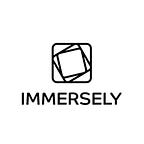When product placement is done right, it can create both an increase in brand recognition and a memorable scene worth talking about later. Seamlessly integrating a brand into a movie or tv show is key to creating a successful product placement. It requires a balance between a brand being recognizable yet not too distracting to the viewers. When it is done right, both parties can greatly benefit. Here are each decade’s best and worst product placements.
1980s:
Best: Reese’s Pieces in E.T. (1982)
Steven Spielberg’s first choice for this product placement was M&M’s, but he settled for the recently introduced Reese’s Pieces instead. Reese’s Pieces were dropped like breadcrumbs in the film in an attempt to find E.T. who had gone missing. This product placement was successful because it incorporated Reese’s without making it too obvious. The iconic oranges, yellows, and browns of the Reese’s brand is clearly visible in the film, creating a healthy brand recognition.
Worst: Marlboro and Coca Cola in Superman 2 (1980)
Superman 2 features a fight scene in which Superman battles an evil villain. In the background of the fight, a Marlboro truck appears and Superman is conveniently thrown into the truck, breaking it open and revealing crates of cigarettes. Superman counters by tossing the villain into a massive Coca-Cola sign. These product placements are overtly obvious and take away from the fight scene.
1990s:
Best: McDonald’s in Pulp Fiction (1994)
In this scene, the McDonald’s brand is not shown but discussed. John Travolta explains the difference between a Quarter Pounder with cheese in the U.S. and in Europe with it there being called a Royale with cheese. This scene is an example of a product placement being written into the film script. It is an odd scene but delivers a memorable conversation while incorporating the McDonald’s brand.
Worst: Pepsi One in The Thomas Crown Affair (1999)
This product placement gets the nod for worst of the 90s by not adding anything to the scene aside from its prominence in the shot. Pepsi One was being rolled out and Pepsi thought a product placement would help boost sales. However, the combination of the can remaining in the center of the shot with the logo facing the audience and the woman taking large gulps of the beverage only draw the audience away from the dialogue of the scene.
2000s:
Best: Wilson and Castaway (2000)
Tom Hanks’ buddy in the film Castaway is a volleyball made by Wilson who he conveniently names Wilson. Dialogue for the majority of the film is between Hanks and this volleyball, making it a main character. Creatively making a brand a main character of a film makes this a successful product placement.
Worst: GM and Transformers (2007)
Transformers is riddled with GM car logos such as Chevrolet and GMC throughout the film. The logos often appear during generously long shots of the car’s front exterior. The logos are so obvious that they pull the viewer away from the film
2010s:
Best: Eggo Waffles and Stranger Things (2016)
Eggo Waffles first make an appearance during season 1 of the series. The character Eleven enjoys the breakfast and even finds herself stealing a few boxes from a grocery store. This product placement feels natural while still giving Eggo’s a significant amount of airtime in the show, becoming the favorite snack of a main character.
Worst: Heineken and Skyfall (2012)
James Bond’s drink of choice has always been a martini, shaken not stirred, throughout the franchise. Heineken, however, decided to change things up by paying for Bond to order the bottled beer instead of his famous martini. This product placement failed because it disrupted a well known character trait of a famous character.
By William Herrin
